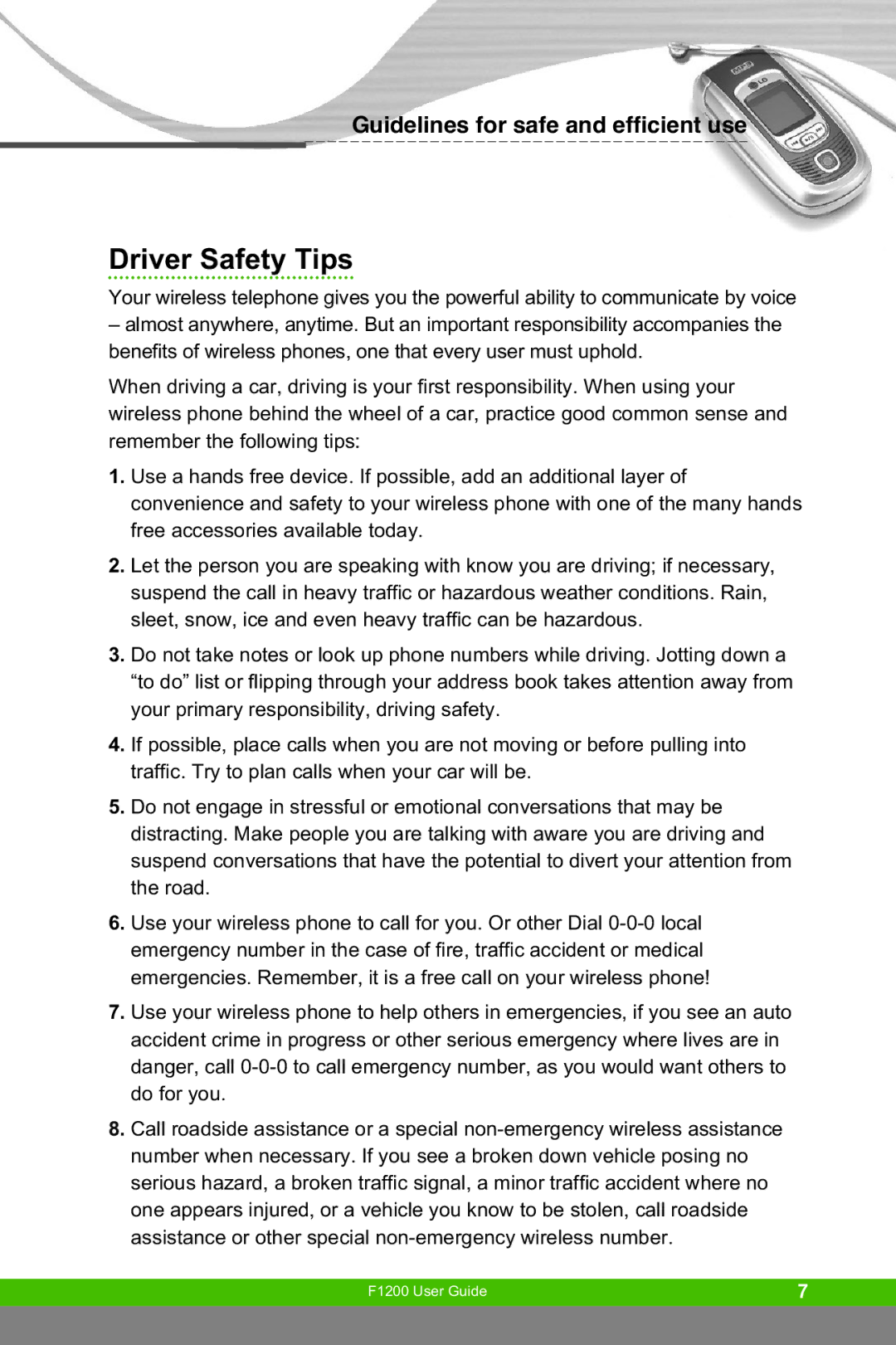
Guidelines for safe and efficient use
Driver Safety Tips
Your wireless telephone gives you the powerful ability to communicate by voice
–almost anywhere, anytime. But an important responsibility accompanies the benefits of wireless phones, one that every user must uphold.
When driving a car, driving is your first responsibility. When using your wireless phone behind the wheel of a car, practice good common sense and remember the following tips:
1.Use a hands free device. If possible, add an additional layer of convenience and safety to your wireless phone with one of the many hands free accessories available today.
2.Let the person you are speaking with know you are driving; if necessary, suspend the call in heavy traffic or hazardous weather conditions. Rain, sleet, snow, ice and even heavy traffic can be hazardous.
3.Do not take notes or look up phone numbers while driving. Jotting down a “to do” list or flipping through your address book takes attention away from your primary responsibility, driving safety.
4.If possible, place calls when you are not moving or before pulling into traffic. Try to plan calls when your car will be.
5.Do not engage in stressful or emotional conversations that may be distracting. Make people you are talking with aware you are driving and suspend conversations that have the potential to divert your attention from the road.
6.Use your wireless phone to call for you. Or other Dial
7.Use your wireless phone to help others in emergencies, if you see an auto accident crime in progress or other serious emergency where lives are in danger, call
8.Call roadside assistance or a special
F1200 User Guide | 7 |
|
|
